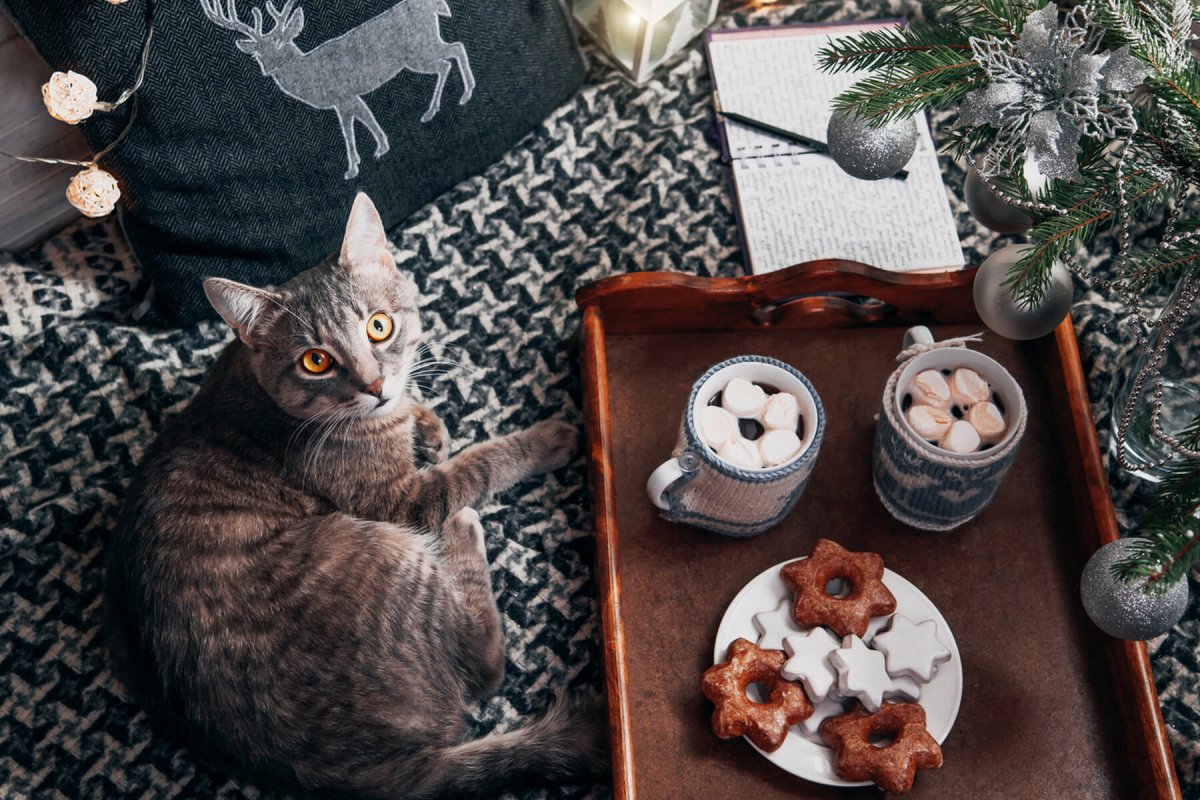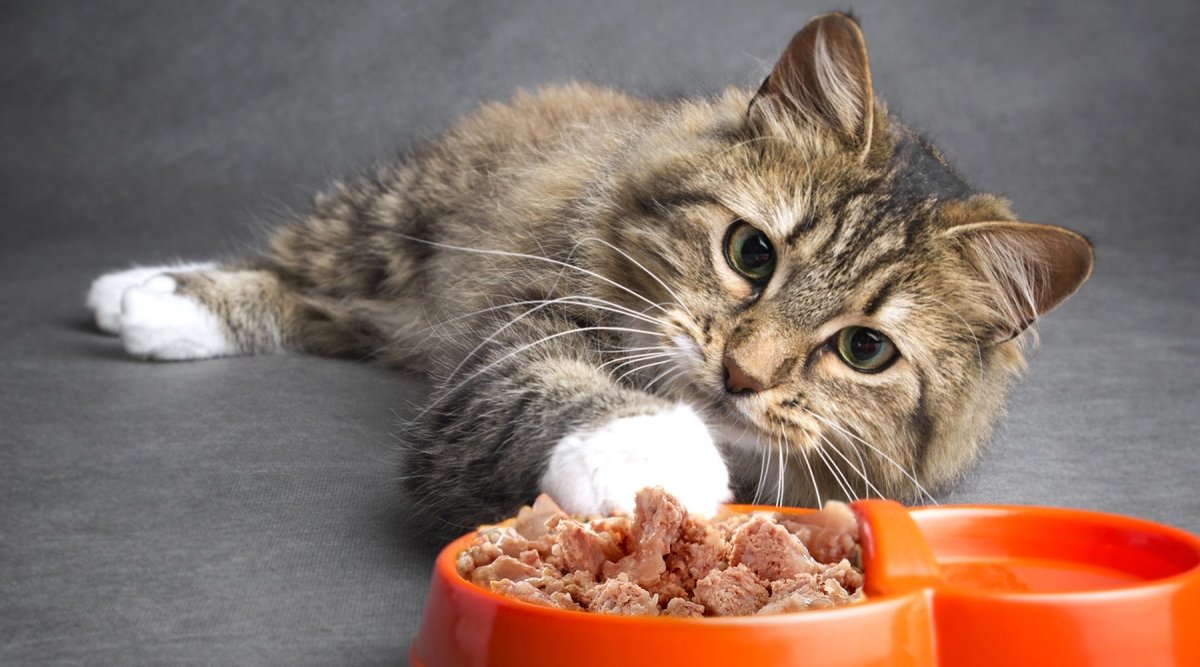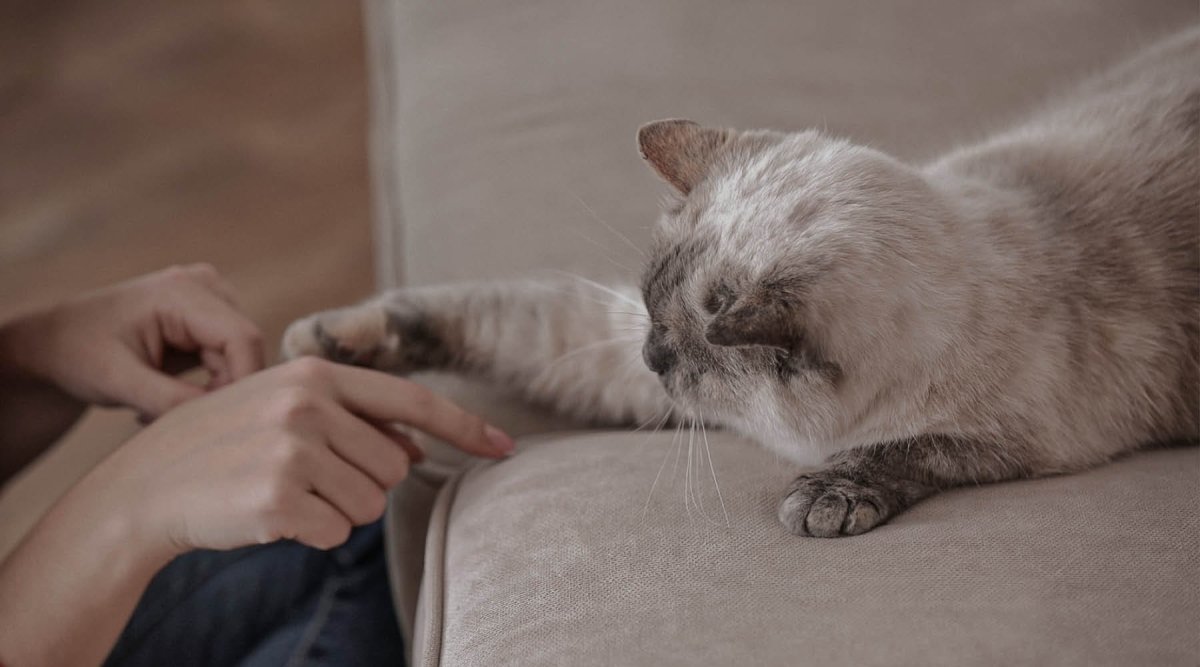Christmas - for many, the most wonderful time of the year. It glitters, sparkles and shines everywhere and the smell of cookies from the oven enchants the mind. But is this time also so contemplative for our animal friends? Or does the excess of chocolate, tinsel and Christmas baubles also conceal dangers for dogs and cats? Our veterinary practitioner Angelica Smaigl and our vet Philipp Schledorn explain the most common sources of danger for pets at Christmas and give tips on how to avoid poisoning and emergency surgery at Christmas.
Danger source no. 1: Chocolate and packaging
The sweet plate is actually the number one source of danger. All too often, one or the other four-legged friend will get their hands on the sweets and then end up in hospital a short time later with suspected chocolate poisoning. This is because chocolate in large quantities is poisonous for dogs and cats. This is due to the substance theobromine contained in the cocoa bean. While humans can break down theobromine using the enzyme cytochrome, this is not possible in dogs and cats. In sufficient quantities, theobromine triggers strong inner restlessness in your four-legged friend. Basically, the higher the cocoa content, the more dangerous it could be for your dog, i.e. dark chocolate can lead to symptoms of poisoning.
Symptoms, prevention and first aid measures for chocolate poisoning
Vet Schledorn lists the first signs of chocolate poisoning in your four-legged friend: nervousness, vomiting, diarrhea, increased thirst, palpitations, cardiac arrhythmia, tremors and convulsions. He advises: If you catch your four-legged friend snacking or he shows symptoms of chocolate poisoning, you should definitely go straight to the vet.
If the chocolate was ingested less than two hours ago, it is still in the stomach. Then, according to vet Schledorn, as a vet I make the animal vomit specifically, which significantly reduces the risk. If your pet has been alone during the day and has eaten the Advent plate, then detoxification therapy including infusions and targeted dehydration must be carried out. It is often not certain how much chocolate the animal has eaten. A trip to the vet is a safe precaution.
There is only one way to prevent your pet from getting chocolate poisoning, according to the vet: "Clearly, chocolate is absolutely taboo for your four-legged friend! Keep all chocolate out of your pet's reach, even at Christmas time.
Packaging in your dog's stomach
Our veterinary practitioner Angelica knows that packaging is another source of danger. Dogs don't usually unwrap the treats, they are often eaten whole. This can lead to gastrointestinal problems and a trip to the vet should not be delayed. If possible, take the leftover chocolate wrapper with you to the vet so that the vet can better assess how much your pet has eaten.
Danger No. 2: Christmas tree with tinsel and Christmas baubles
Shiny tinsel, colorful glass baubles - the Christmas tree is the symbol of Christmas and also a major source of danger for your four-legged friend.
Our veterinary practitioner advises: First of all, the tree should be stable and preferably secured to the wall with ropes so that it cannot fall over when jumped on. Make sure that the animals cannot reach the water in the tree stand, as this may contain preservatives, pesticides and the poisonous essential oils of the conifer. It is best not to leave your pets alone with the tree at all.
Christmas baubles can be a real danger
Dogs and cats love to play with the glittering glass baubles. There is a high risk of the baubles breaking and being eaten. Our vet Philipp Schledorn explains: Every year anew we marvel at the most incredible things on x-rays of the abdomen. We probably see a swallowed Christmas bauble in the abdomen of a curious dog 2-3 times per Christmas season. And swallowing is not the worst thing, as long as we notice it in time: If the dog chews up the bauble, it can cause additional nasty injuries to the gastrointestinal tract.
Glittering tinsel is poisonous
The play instinct of cats is immediately awakened by glittering tinsel. However, the colorful threads not only often contain lead, but can also lead to massive digestive disorders and an obstruction of the intestinal tract. Vet Schledorn has often had to operate tinsel threads out of cats or whole Christmas baubles out of dogs at Christmas time. To minimize the risk to cats and dogs, it is best to avoid tinsel altogether or use paper tinsel and hang the Christmas tree decorations at a height that your four-legged friend cannot reach.
What to do if the Christmas decorations have been eaten?
If you have seen that your cat or dog has eaten the Christmas decorations, you should react calmly and think things through first: Has at least one whole strand of tinsel been swallowed? Have pieces of a glass ball been swallowed or even Christmas decorations as a whole? Then you should quickly take your dog or cat to the vet. In the meantime, make an appointment by telephone. Then the staff can prepare for the emergency. A visit to the vet should not be postponed if symptoms such as vomiting, gastrointestinal noises, diarrhea, cramps or loss of appetite occur.
If a dog or cat is brought to the vet with the suspicion that a foreign body has been swallowed, the vet will begin the examination by palpating the abdomen. A contrast medium makes the foreign body visible when the chest and abdomen are X-rayed. If the foreign body is in the stomach, a gastrointestinal endoscopy is performed and the foreign body is removed with forceps. However, if the foreign body is in the intestine and may have caused an intestinal obstruction, the four-legged friend may have to undergo surgery in the worst case.
Danger source no. 3: Candles & fairy lights
Christmas without candles? Hard to imagine! But the curiosity of our four-legged friends can lead to burns to their whiskers or the inside of their nose. In general, you should never leave your pets alone with lit candles. If the dog is wagging or the cat is playing, the Christmas decorations can become a real fire hazard. Therefore, remember to always light candles out of reach of your four-legged friends.
Fairy lights are not without danger either. If the cables are nibbled, there is a risk of painful electric shocks. If you have a "nibbler" at home, hide the cable of the fairy lights so that the four-legged friend cannot reach it or simply pull the plug when you don't have your pet in sight. After all, nobody can watch their four-legged friends all the time once the Christmas hustle and bustle has started.
Danger source no. 4: Advent wreath and Christmas plants
Our veterinary practitioner Angelica also knows two plant-based sources of danger that are particularly in the spotlight at Christmas time:
A beautifully decorated Advent w reath not only delights you, but also your pets. Candles, baubles and the fragrant smell of fir trees on the table - this arouses curiosity. Maybe even to touch or nibble on, because you don't get something like this every day. But: the pine needles can be poisonous for four-legged friends. So the same applies here: Always put the wreath out of reach of your pets or, in an emergency, lock it away as soon as you leave the room.
Many traditionally popular Christmas plants are poisonous to dogs and cats. Eating them can lead to vomiting, tremors, pulmonary edema, apathy, delayed reflexes, increased salivation or even death. Although plants such as poinsettias, Christmas roses and mistletoe are very festive and certainly beautiful to look at, they have no place in a household with animals.
If you still want to decorate your household with festive plants, you should keep them out of reach so that the animal cannot be poisoned. Otherwise, you can switch to healthy garden herbs and plants for dogs, cats and the like, e.g. the Christmas cactus, which also looks great.
Source of danger no. 5: wrapping paper
While we are unwrapping the presents and taking care of the contents, our dear four-legged friends are almost magically attracted to the glittering and crackling foil, ribbons, bows and colorful paper. Cats and especially young, playful dogs tend to play with and sometimes even nibble on the packaging material. This often results in swallowing. This can also lead to digestive problems. You should consult a vet if your pet shows signs of stomach problems. Small amounts of wrapping paper or decorations are not healthy, but are not normally dangerous for your four-legged friend.
Source of danger no. 6: Spray snow
The ever-popular spray snow is often used, which looks particularly pretty on the Christmas tree or windows. As a dog or cat owner, however, you should be wary of this decorative idea. Just a small amount of spray snow can lead to poisoning as it contains lead.
Cats in particular lick a lot of things and can ingest these toxic substances out of curiosity. Our veterinary practitioner Angelica advises: Use natural materials such as wood or straw as Christmas decorations in your household.
Source of danger no. 7: the festive food
We have already written above about eating chocolate and other sweet treats. We would also like to mention the festive meal. Often all it takes is a moment of inattention and the festive roast has been nibbled on or stolen altogether.
Depending on the ingredients, our Christmas food can cause gastrointestinal problems in our four-legged friends.
Poultry bones can splinter easily and, just like fish bones, can be dangerous for your pet's gastrointestinal tract. In this case, only caution will help: Christmas cooks with pets should always keep an extra eye on their four-legged friends.
With these precautions, nothing can go wrong over the Christmas holidays!
Another tip for all four-legged friends who are prone to indigestion, and not just at Christmas: With our purely natural gastrointestinal products for acute use, you can alleviate your pet's suffering and be prepared for any slip-ups at Christmas!
We wish you, your family and your four-legged friends a Merry Christmas!



